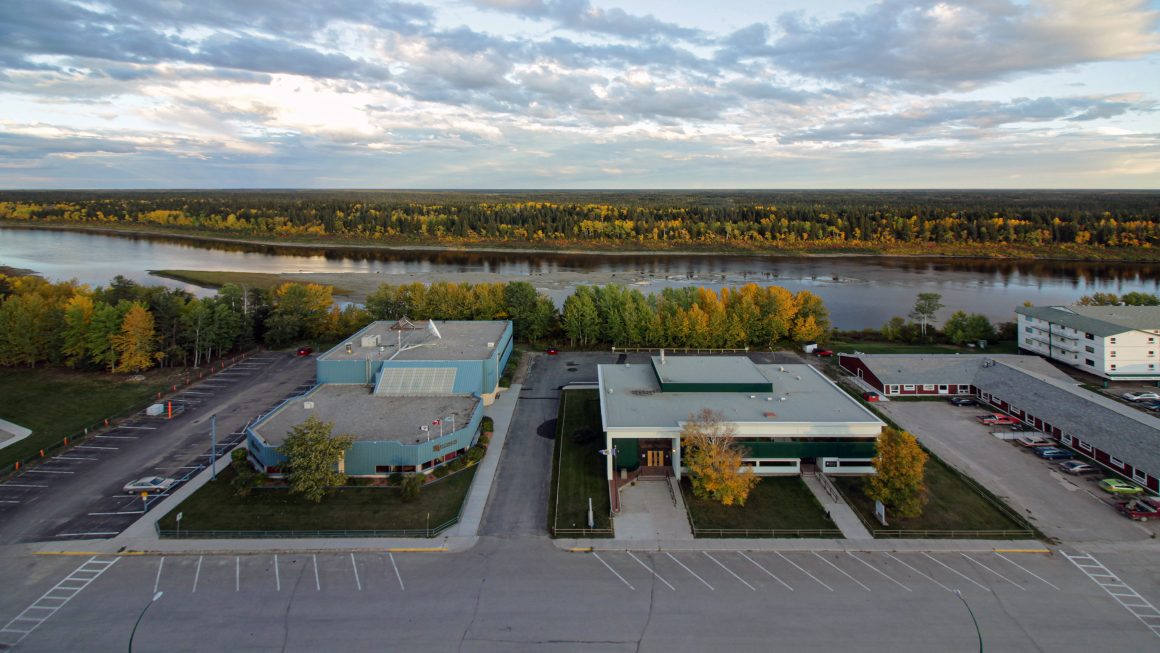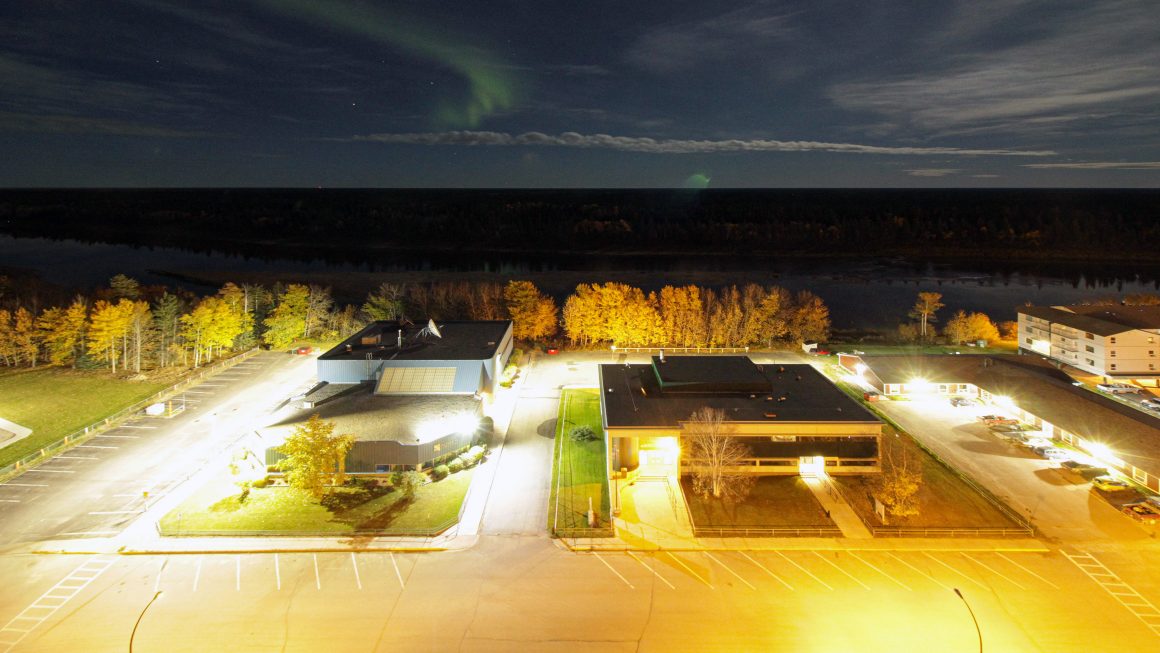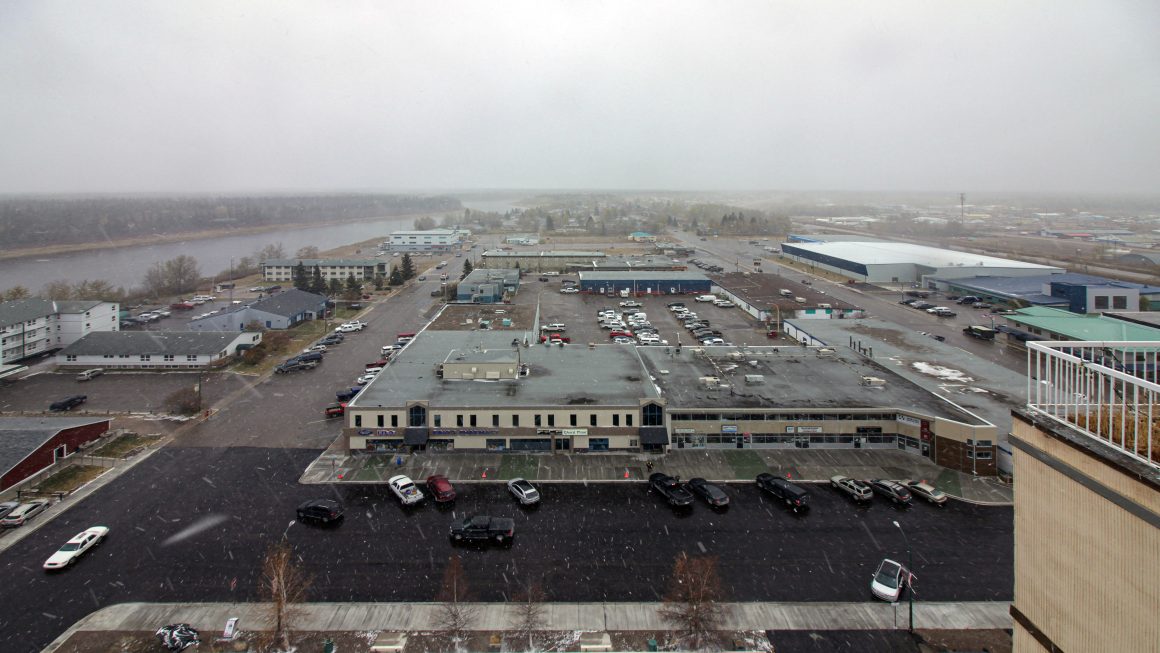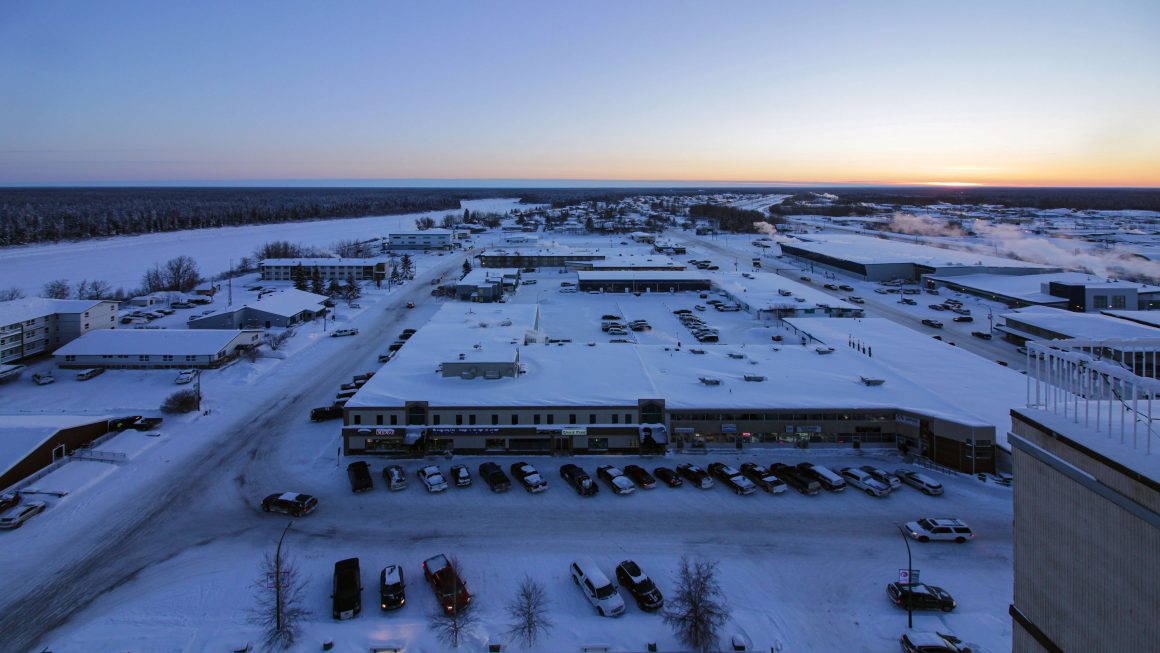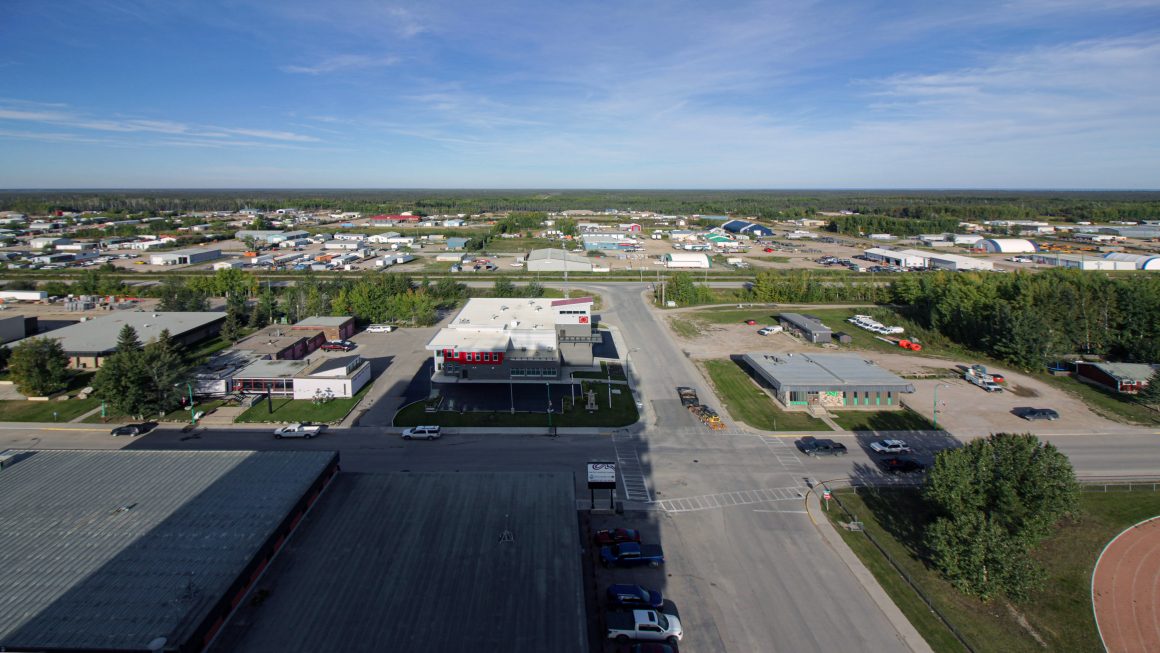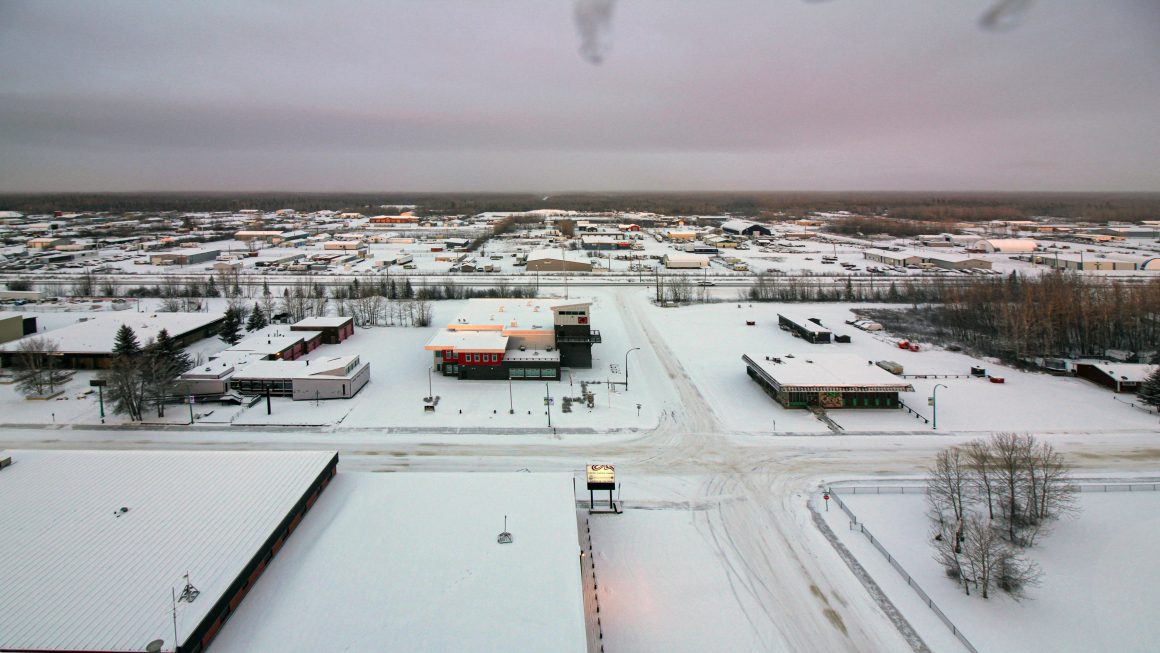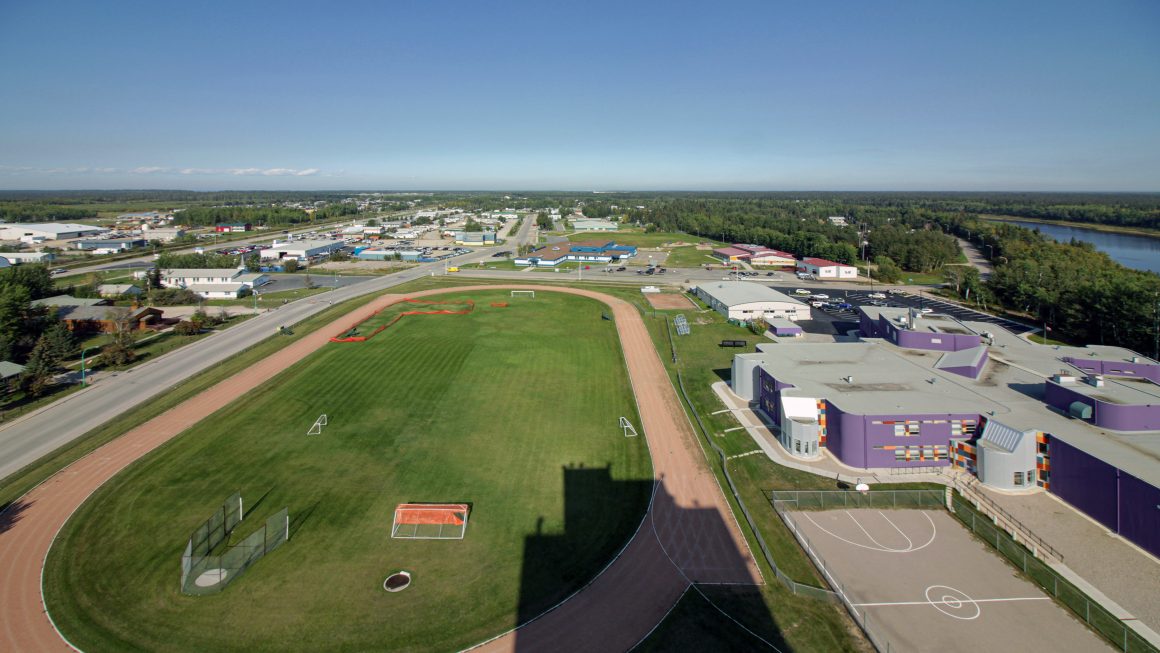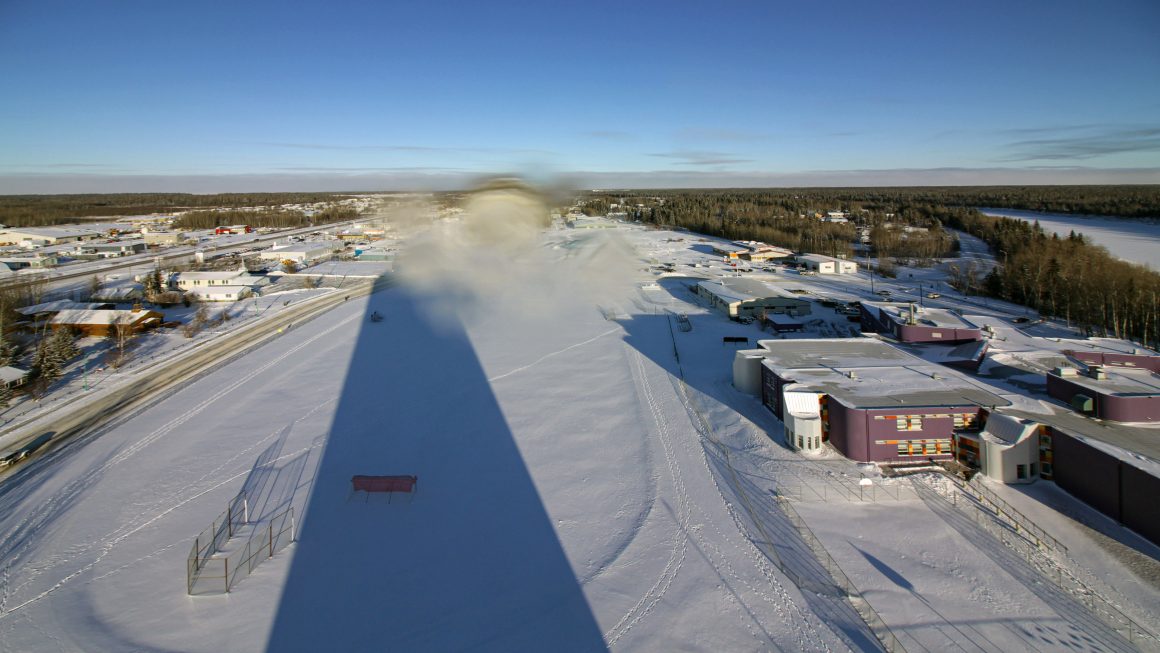Mackenzie Place is a multi-channel time-lapse film shot from the roof of the seventeen-story tower that presides over the center of Hay River (Xátł’odehchee) in Canada’s Northwest Territories. The tower’s singular presence provides a unique opportunity for generating creative representation of this near-arctic town and its surroundings. Derived from nearly one million still images captured over five years, the film brings to life a panorama of environments and activities across all four seasons. To the north, we see institutional infrastructure such as schools. To the west, we see industrial areas, with the Great Slave Lake (Tucho) visible on the horizon beyond Canada’s northernmost train line. To the south, commercial and residential fabric are visible, and to the east, we see the namesake river and the seemingly limitless boreal forest beyond, home of the K’atl’odeeche First Nation.
The film aggregates the carousel of space and time that the building and its diverse inhabitants bear witness to, year after year. As befits its conflicted position in the local imaginary, the building is seemingly erased from the town in the film, remaining present only as a shadow. Because Hay River is just below the Arctic Circle, the sundial silhouette of the tower evolves from a single moment of visibility on the winter solstice to a full rotation across all four channels on the summer solstice.
Mackenzie Place is also a meditation on creative monomania. The original goal—to capture one image per minute per direction for 365 continuous days—proved elusive, despite years of trying. Freed from this obsession, the film’s five chapters instead register the peculiarities of technology, timing, and teamwork present during a given period in the project’s trajectory. The final result captures the creative process with more authenticity than a film derived from a complete set of images ever could have.
Finally, Mackenzie Place links my collaborators’ careers with my own, returning us to Hay River again and again even as our jobs take us further away. The film’s audio is four voices—High Rise residents, perhaps—reading from anthropologist Lindsay Bell’s book Under Pressure: Diamond Mining and Everyday Life in Northern Canada (University of Toronto Press, 2023), which launches during the exhibition’s run. Through a focus on everyday life in Hay River, including lives lived in the tower, Bell’s ethnography illustrates the ways northerners navigate the opportunities and obstacles created by large-scale resource development. My and Bell’s research and creation intersect around the quotidian nature of the High Rise structure—both inside and out.
Mackenzie Place Chapter 1 Spotting the High Rise; Arrival (December 3—23, 2014) Chapter 2 Billy; Gary; Destiny; Why This There? (June 20—October 25, 2015) Chapter 3 Ivan; Michelle; Infrastructural Prospecting; Signs (December 16, 2017 — April 23, 2017) Chapter 4 (August 27—31, 2017) Chapter 5 Chris; Marion; Disappointments; The Fire (September 1, 2017 — October 3, 2018) Multi-channel video, total length 1:00:00 Jesse Colin Jackson, 2023 SCRIPT COMPLETE FILM (condensed for Youtube)
Mackenzie Place was initially pursued with my long-standing collaborator Tori Foster. Philip Otto processed the million images, edited the films, and helped install the exhibition. Lindsay Bell introduced me to Mackenzie Place and wrote the script; Madelyn Hertz, David Knapp, Philip Otto, and Zsofia Villalba voiced it. William Amos, Issac Hillman, Aldrin Lupisan, Jared Monkman, Kaeli Morris, and Sharon To helped refine the methods and capture the images. Ken Latour at Aurora College facilitated community partnerships in Hay River. Cindy Lafond, Blaine Maillet, and Harry Satdeo provided access to “the High Rise.” Jacob Barker, Craig Kovatch, Jared Monkman, Kevin Wallington, Sophie Call, Patrick Poisson, and many others provided further local assistance; thank you, Hay River. Genevieve Scott introduced me to Lindsay and supported us the whole way.
Primary funding for Mackenzie Place provided by the Social Sciences and Humanities Research Council of Canada’s Insight Development (2013-15) and Research Mobilization, Creation, and Innovation (2022-23) programs. OCAD University, the University of California, Irvine, the University of Western Ontario, and the Beall Center for Art + Technology provided further funding.
